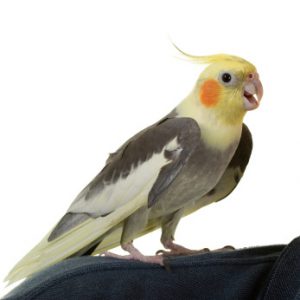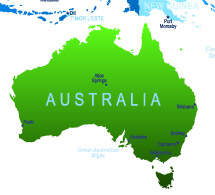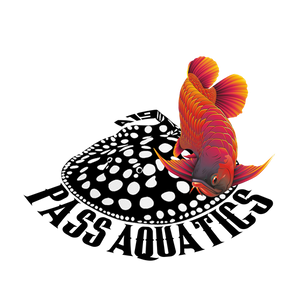Pickup available at PASS Aquatics
Usually ready in 4 hours
Cockatiel Assorted
-
PASS Aquatics
Pickup available, usually ready in 4 hours22 John Street
Aberdeen AB25 1BT
United Kingdom+441224820402
Care & Feeding
Personality & Behavior
Speech & Sound
Health & Common Conditions
Get a Cockatiel
- Cockatiels are members of the cockatoo family
- In their native Australia, cockatiels are also referred to as weiros as well as quarrians
- Lutino mutation cockatiels can develop a bald spot on the back of their head. Some aviculturists consider this to be a genetic fault, although it doesn’t appear to affect their health.
- The cockatiel was first classified in 1793 as Psittacus hollandicus, then moved to its own genus Nymphicus, 1832. Nymphicus is a reference to mythical nymphs and hollandicus refers to New Holland, which was the name first applied to Australia in 1644 by the Dutch, who named it after Holland.
- Diet & Nutrition: Parrot food
 Cuddly, outgoing and comical are just three reasons why the cockatiel is the No. 1 pet bird in America. Cockatiels are also talented whistlers, and male cockatiels in particular are known for their whistle serenades, which can be directed at their favored person, their favorite object or their mirror reflection. When not whistling or keeping themselves busy foraging for food and fun around the cage, cockatiels often enjoy spending their downtime snuggling on their favored person’s shoulder. A healthy, well-socialized cockatiel can make a great family pet and is also ideal for apartment living.
Cuddly, outgoing and comical are just three reasons why the cockatiel is the No. 1 pet bird in America. Cockatiels are also talented whistlers, and male cockatiels in particular are known for their whistle serenades, which can be directed at their favored person, their favorite object or their mirror reflection. When not whistling or keeping themselves busy foraging for food and fun around the cage, cockatiels often enjoy spending their downtime snuggling on their favored person’s shoulder. A healthy, well-socialized cockatiel can make a great family pet and is also ideal for apartment living.
Native Region / Natural Habitat

Cockatiels are native to the semi-arid regions of Australia. This open environment might be a reason why cockatiels don’t have the ear-piercing screech of parrots originating from dense rain-forest habitats. Wild cockatiels fly to the ground to forage for food. Cockatiels readily breed in the wild, and they are also easy to breed in captivity, which makes them widely available as pets at a lower cost than most other parrot species. Wild cockatiels are always on alert for predators and are light sleepers. A pet cockatiel might have an occasional night-fright episode, where it thrashes around the cage at night as if startled. You can help your cockatiel find its way back to its perch by leaving a night light on in its room.
Care & Feeding
A cockatiel needs a cage spacious enough to accommodate multiple perches, toys, food bowls and have plenty of room to flap its wings without hitting them against anything. A cage with a large door front is ideal because it makes it easier to return a cockatiel to its cage, especially since cockatiels can be flighty birds. Cockatiels are natural ground foragers and will forage on the bottom of the cage if given the opportunity; cover the cage floor with newspaper and sprinkle crumbled treats or millet sprinkle seed for your cockatiel to find. Cockatiels are social birds and thrive when given opportunities to interact with you, whether it is gently petting their cheek feathers, being talked to or simply being in the same room as you.
A healthy cockatiel diet includes commercially balanced diets, such as Lafeber Premium Daily Diet Pellets, as well as other food, fresh vegetables and some seed. A well-cared-for cockatiel can live for more than 20 years.








